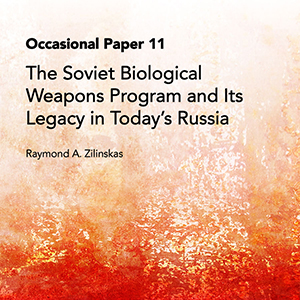July 22, 2016
Raymond Zilinskas
The following in an excerpt from an article from the Institute for National Strategic Studies.

Cover of “The Soviet Bioweapons Program and Its Legacy”
In its first Weapons of Mass Destruction (WMD) Case Study, the Center for the Study of Weapons of Mass Destruction (CSWMD) at the National Defense University examined President Richard M. Nixon’s decision, on November 25, 1969, to terminate the U.S. offensive biological weapons program.1 This occasional paper seeks to explain why the Soviet government, at approximately the same time, decided to do essentially the opposite, namely, to establish a large biological warfare (BW) program that would be driven by newly discovered and powerful biotechnologies. By introducing the innovation of recombinant DNA technology—commonly referred to as genetic engineering—the Soviets were attempting to create bacterial and viral strains that were more useful for military purposes than were strains found in nature.
Nixon’s decision was widely publicized and documents revealing the reasons behind it are, in the main, available to the public in the National Archives, the Nixon Presidential Library in San Clemente, California, and publications written by members of the Nixon administration. In sharp contrast, the Soviet decision was highly secret at the time and remains so to this day. All contemporary documents pertaining to the Soviet offensive BW program remain classified and none of the military officers and officials who operated it has spoken or written about it except to deny that it existed or to belie its offensive intent.
